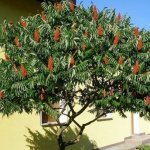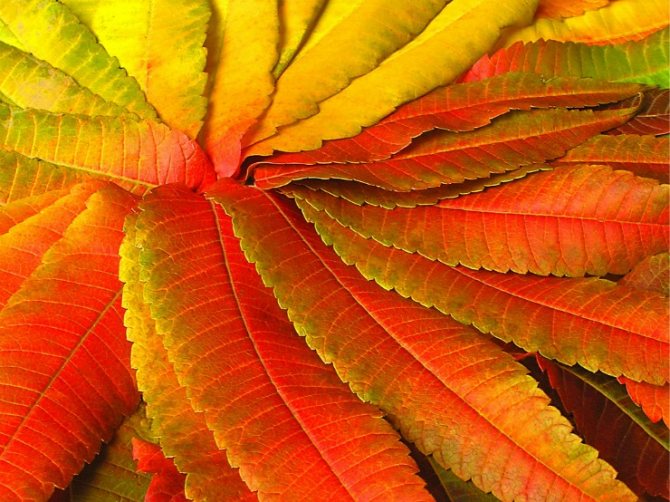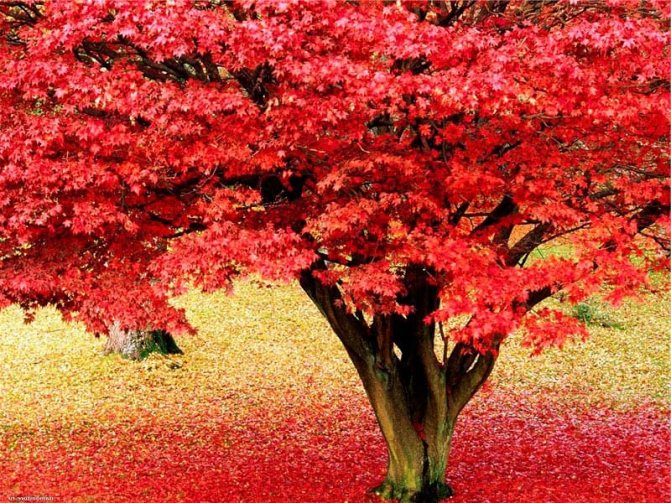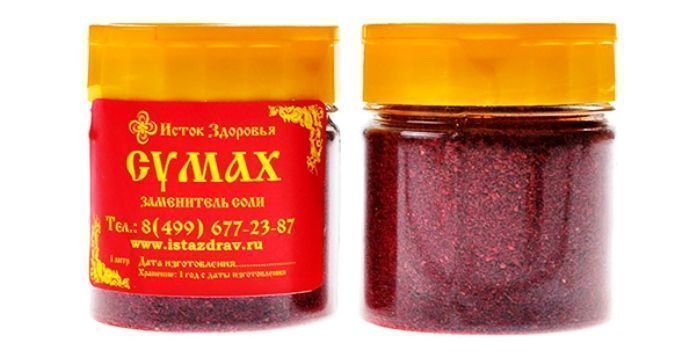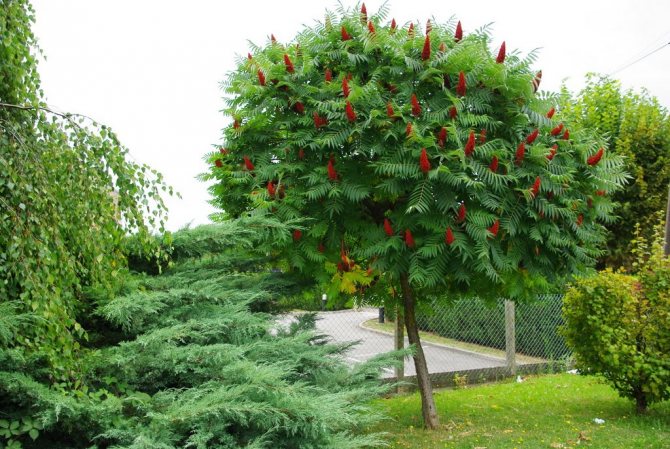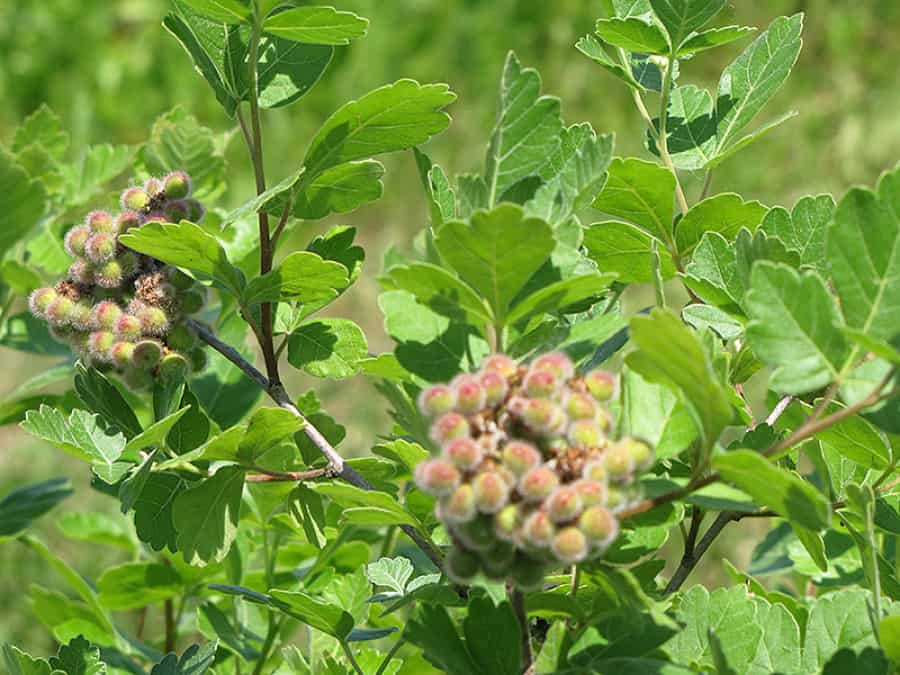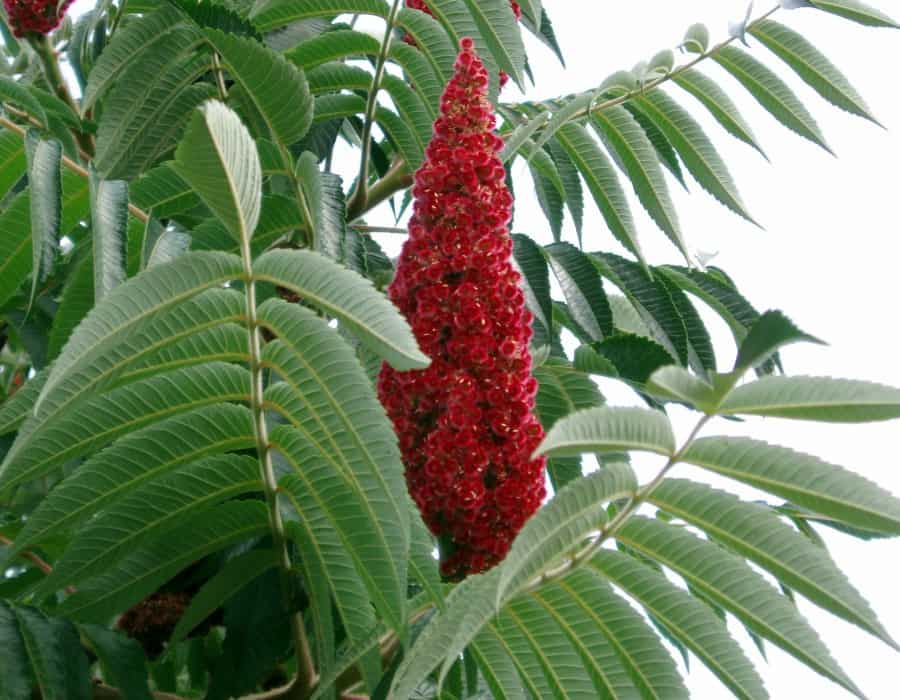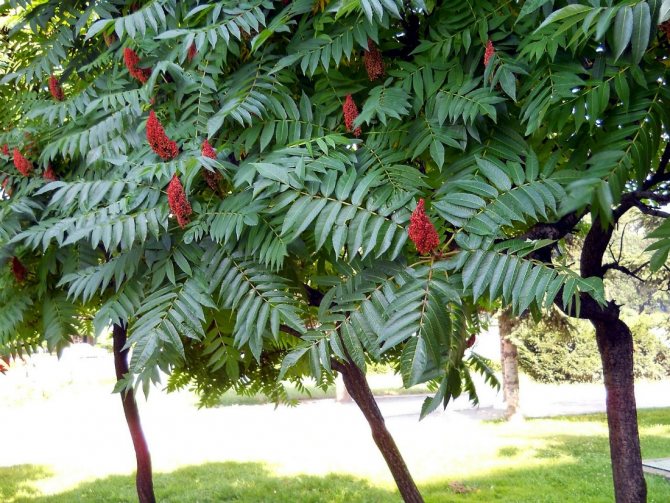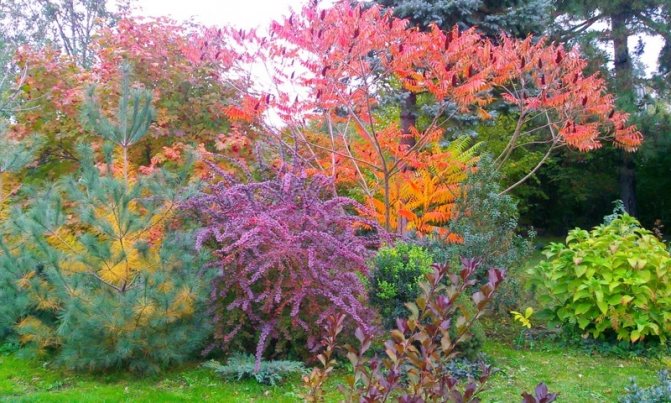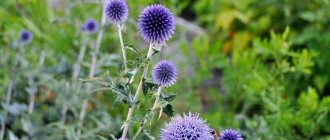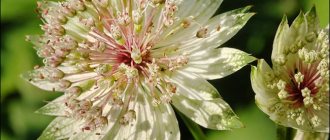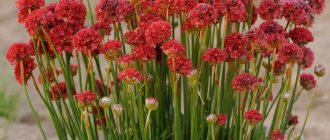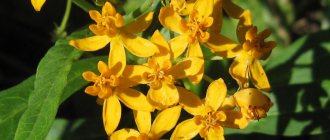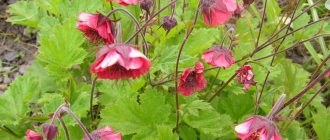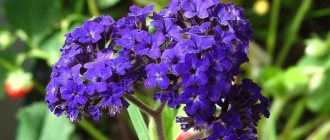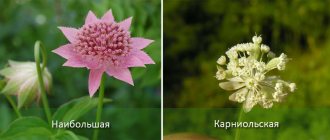Sumakh is one of the plants, the beneficial properties of which have been known since ancient times. Sumy is famous for such qualities: tanning, dyeing and decorative properties. The plant has several species, among which the most common is the deer-horned sumac or its second name is the vinegar tree.
This variety stands out from the rest for its feathery leaves and a height not exceeding five meters. But the main advantage is increased decorativeness, starting from the beginning of spring and lasting until the end of November. Then it stands out with the appearance of beautiful winter fruits. It is not difficult to recognize sumac at first sight.
Not very tall deciduous tree, foliage spreads in breadth and in general the tree looks like a huge shrub. The crown structure is also very attractive. The tree looks spectacular thanks to the stunning inflorescences that are collected from small flowers.
In addition, feathery leaves with simple lobes and rounded petioles give additional beauty to this plant. And the inflorescences are in the shape of a candle with a colorful brown shade of the autumn season. Among woody plants, this plant is especially appreciated by landscape designers.

What kind of plant is it and where does it come from
Deer-horned sumac (R. typhina) belongs to the sumac family and is a low multi-stemmed tree or shrub. In nature, it grows up to 10–12 m in height. Garden forms rarely exceed 4-6 m.
The native land of the plant is the eastern parts of North America, where it grows in abundance on dry edges of deciduous forests, roadsides, and low mountain slopes. Sumy came to Europe at the beginning of the 17th century and was immediately liked by gardeners for its unusual appearance.
In spring, the plant expels thick shoots covered with a delicate brown-gray down. They resemble young deer horns - hence its specific name "deer-horned".


Young shoots of sumach - soft and fluffy, like deer antlers
Large odd-pinnate compound leaves of sumach reach a length of 50-60 cm and resemble frond palms or ferns. Each leaf consists of long, serrated leaflets with a dark green velvety surface (from 11 to 31). The peak of decorativeness of the shrub is in autumn, when the leaves acquire a stunning crimson color and seem to glow from the inside. Moreover, before turning red, the foliage changes the entire palette of shades - from golden yellow to fiery scarlet.


Sumach bush in the autumn garden looks like a flaming bonfire
Sumach flowers are no less original. In June, thick red candles 15–20 cm high appear on the tops of the shoots, consisting of many small flowers, exuding a fresh cucumber-vinegar aroma. For this smell, sumac got its second name - vinegar tree.
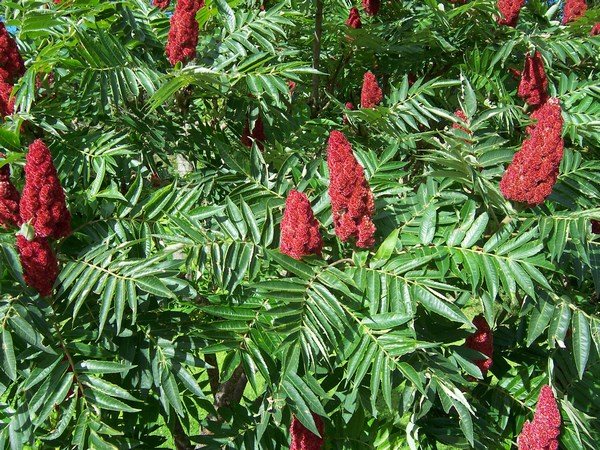

In place of the candles, over time, dense clusters of berries are formed, decorating the crown until winter.
Sumach is a plant with dioecious polygamy. This means that it forms female and male flowers separately. The first are the same candles that turn into clusters of red berries, the second are loose yellowish-green inflorescences necessary for pollination. On one tree, they are not found in their pure form, but the plant can form hermaphroditic (bisexual) flowers.
The fruit of the vinegar tree is edible.In the United States, they are still used to make homemade soft drinks that taste like lemonade. But most often the berries are left on the tree - as a winter decoration and a treat for birds.


Thanks to dense panicles with red berries, even in winter, sumac looks decorative
Selection of planting material
In order to get guaranteed good seedlings of deer-horned sumach - vinegar tree, it is better to buy them in horticultural farms. Inspect the tree carefully before buying. He should have firm, developed leaves and healthy roots... The shape of the sumac must be symmetrical. If it has a crooked trunk, then the plant has been pruned.
A tree with a damaged root dies quickly. Choose a seedling with a clod of earth, then you will know that the rhizome is not damaged. A quality plant has fresh leaves without dried out tips. There should be no cobwebs or mold on it, as this is a sign of illness or insect infestation.
The roots of the seedlings should not be rotten or blotchy. A healthy tree has strong roots, well buried in the ground. If a tree has an overly bright leaf color or too large flowers, this means that it has been overfed with fertilizers. The plant will be sore and you can quickly lose your sumac.
How to plant sumac
Autumn is the best time to plant a decorative tree.
It is advisable for him to choose a place in the garden that is sunny, sheltered from the wind, with well-drained soil, since he does not accept root trapping. In terms of other growing conditions, sumac is a real Spartan. It will grow both on fertile loams and on poor sandy or stony soils, an alkaline and slightly acidic environment is suitable for it, it is resistant to diseases and pests, easily tolerates heat, drought, frosty winters. And if it freezes, it always recovers.
When planting, you need to take into account two important features of the plant.
- Sumakh gives abundant growth. And if you do not want it to spread throughout the garden and displace other crops, immediately provide for restrictors for root growth. To do this, a special root barrier or a plastic border is driven into the soil to a depth of at least 50 cm. This is done along the perimeter of the crown at a distance of 1.5–2 m from the trunk, so that the roots have a place to grow.
- Sumakh is a dioecious culture. If you want to have a lot of fruit, plant at least two vinegar trees nearby.
When planting in the fall, it is advisable to insulate the root zone with fallen leaves, spruce branches, so that the plant is guaranteed to overwinter and begin.


The vinegar tree grows very quickly, annually increasing in height and width by 30-40 cm
Reproduction
The culture propagates most often by root suckers. This process can be performed both in the fall and in the spring. This requires a number of steps:
- separate the seedling from the main plant, without touching the rhizomes;
- dig a hole, the size of which is 2 times the volume of the roots;
- place a seedling in the hole, spread the rhizomes, cover with soil;
- when planting, make sure that the neck of the roots is located at the level of the soil surface;
- compact the earth, water sparingly.
You can propagate by tree and seeds, but this is a complex process.
Firstly, only fresh seeds are required, and secondly, they require preliminary stratification within 2 months. You also need to carry out the treatment with boiling water and a solution of sulfuric acid.
Features of tree care
Another great thing about vinegar is that it requires little or no maintenance.
Water it only in case of extreme heat and prolonged drought. The plant also does not need feeding. Although if you see that the growth is insufficient, in the spring you can pour humus or plant compost into the ground around the trunk. This will give the tree a good start.
Sumac does not require annual pruning, although it is not afraid of it, since it grows quickly. Usually, in the spring, they carry out sanitary cleaning of the crown, removing frozen branches. And they also form a plant by shortening too protruding shoots.
Due to its high plasticity, the vinegar tree can be grown on a trunk, formed in the form of a multi-stem tree, a shrub.
Since the plant is prone to overgrowth formation, it is not recommended to loosen the soil in the root zone. By damaging the roots, you stimulate the emergence of young trees. By the way, the same can be said about excessive feeding. The better you take care of the tree, the more abundant the growth will be.
In order not to loosen the soil, it is best to turf or mulch the root zone with decorative gravel. If the shoots appear and need to be removed, cut off the shoots at the level with the soil, but do not dig them out, otherwise you will get several instead of one tree.
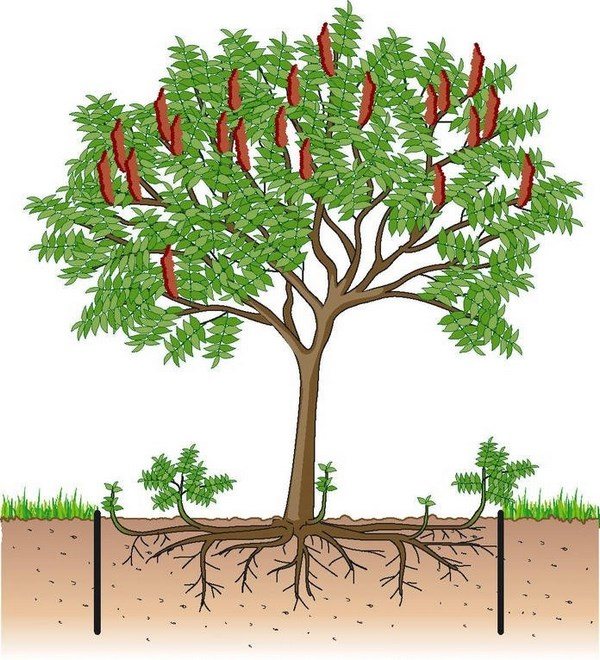

The best way to avoid overgrowth is to cover the trunk circle with grass and keep the plant "from hand to mouth"
Facts to note for gardeners about sumac
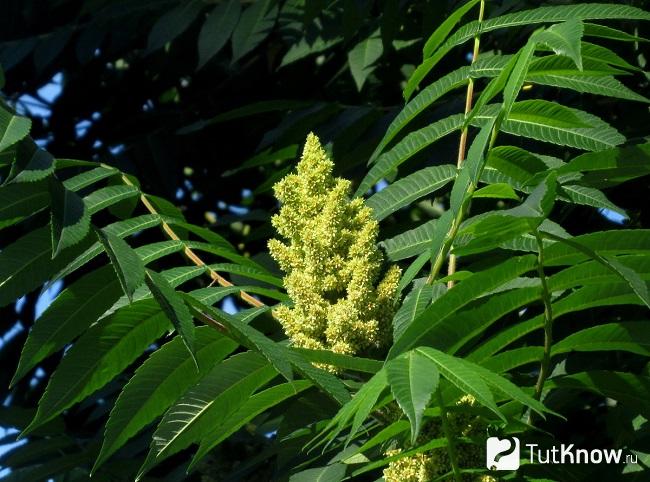

The vinegar became known among gardeners since 1629, then it was first grown in other countries. If we talk about central Russia, then of the whole variety of species, fluffy sumac or deer-horned sumac (Rhus typhina) is the most popular. Even after winter freezing, the shoots are easily restored with the arrival of spring. In the southern regions, such a species as glabrous vinegar (Rhus glabra) grows well. The slopes of the Crimean and Caucasian mountains are sheltered by plantings of tannic sumach (Rhus coriaria), and the species of vinegar (Rhus aromatic), which has a creeping shrub form, is also of interest.
When the fruit-drupes of the vinegar tree ripen, it is customary to make a spice from them that bears the same name as the plant itself - sumac. This spice is widespread in the Asian and Caucasian countries, as well as the Middle East. Since the color of the spice has a ruby or red tint, the meat dishes prepared with its use differ in the same color. Due to the sour taste, this seasoning is often used as a substitute for lemon or used instead of vinegar in marinades. If you add sumac to culinary dishes, then their shelf life is extended.
Vinegar-seasoned dishes should be seasoned with vegetable oil so as not to spoil the color. According to the recommendations of the chefs, the seasoning is added to vegetable salads. Since many spices do not have any pronounced taste at all, sumac is mixed with them, for example, with sesame or thyme, nutmeg or saffron, this also includes thyme and ginger.
With only one specimen of the vinegar tree, it is possible to get up to half a thousand fruits. The collection is carried out after the full maturation of the drupes, then their color is completely preserved. The value of the fruit is precisely in the intensity of color - the more saturated it is, the better the berries.
Important!
If the color of sumach berries began to fade, then their shelf life is coming to an end.
The composition of the fruit contains the following highly active substances:
- a large amount of natural acids (citric and tartaric, malic and ascorbic);
- vitamins and oils, including fatty and volatile;
- minerals including phosphorus and potassium, magnesium, iron and calcium;
- tannin.
Due to such a strong composition, sumac has long been used in folk medicine, serving as an antiseptic and anti-inflammatory effect. This drug makes it possible to cleanse the body of toxins and toxins, remove harmful substances. Vinegar foliage can be useful for stopping blood from a cut in the skin. Sumach-based products serve to accelerate the healing of not only wounds and cuts, but also burns.Traditional healers prescribed them to patients suffering from diarrhea and paralysis to relieve the symptoms of rheumatism. Such drugs increase the efficiency of the digestive system and increase blood clotting.
Usually sumac (crushed berries) is mixed with water and taken orally for scurvy or swelling. If a person suffers from diseases of the larynx, then it is recommended to take a hot vinegar tincture. To prepare ointments, the basis of which will be vinegar, then its bark and foliage should be dried. Such funds will help reduce sugar in diabetes and cholesterol in obesity, can act as a diuretic and counteract stroke and fungal diseases.
However, there are a number of contraindications for the use of preparations based on sumach, they are:
- any trimester of pregnancy;
- lactation period;
- increased blood clotting;
- diseases of gastric etymology.
How to use in landscaping
The deer-horned sumac looks most advantageous in single plantings. A low tree or shrub with large exotic leaves and bizarrely curved stems can be planted on the lawn in front of the house, in the courtyard, against the background of an evergreen hedge of coniferous plants.


Reindeer sumac in the landscape design of the city courtyard
Several plants planted by a group also look beautiful. In this case, you can also count on a generous berry harvest.
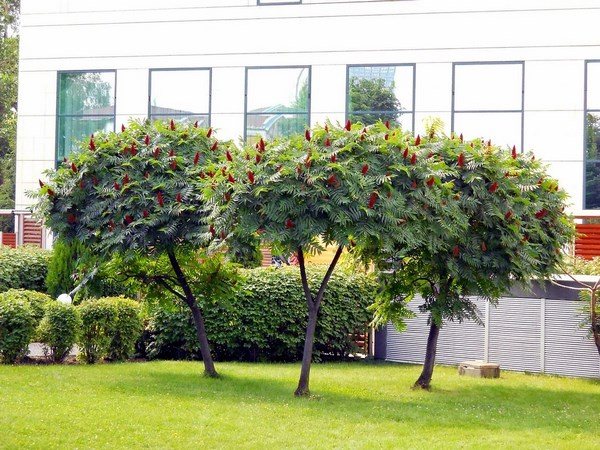

Three sumacs on the lawn make up a very picturesque group
You can combine the vinegar tree with other garden trees, shrubs, perennials.
- The unusual appearance of the North American guest will be emphasized by varietal conifers with a creeping crown, as well as small-leaved plants - birch, Thunberg barberry, scumpia, cotoneaster.
- The autumn crimson color will effectively “shoot” against the background of evergreen stands with dark green and blue needles.
- The purple crown looks picturesque, surrounded by dark purple asters and yellow chrysanthemums.
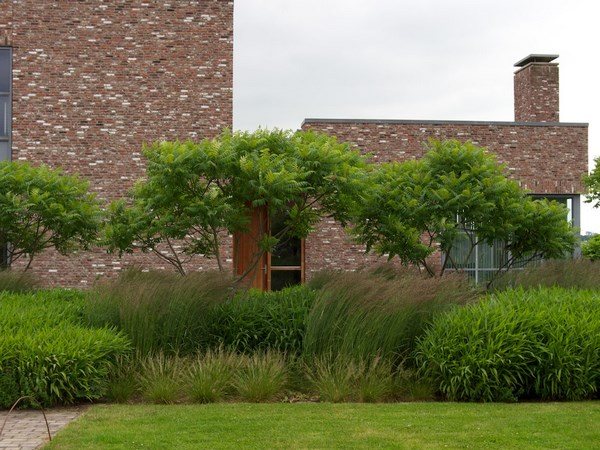

Vinegar tree in garden compositions
Due to the rapid growth of creeping rhizomes, sumac is used to stabilize the soil, planting it on slopes. The plant also looks organic on an alpine slide, where it can successfully replace another favorite of the autumn garden - Japanese maple.
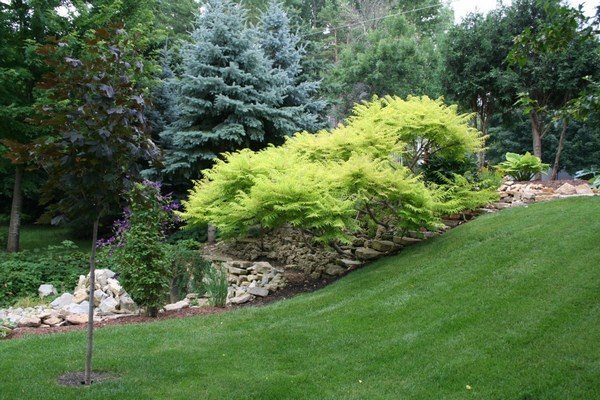

Stony slopes are closest to the natural habitat of sumac
Requirements for conditions
All the vinegar tree needs is good soil. The plant will develop well if the soil is:
- sandy;
- sandy-clayey;
- sandy and stony.
The soil should be dry and loose enough. The culture can grow even on slightly saline soil, in contrast to classic woody plants. Wet, well-drained soil is suitable for growing sumac.
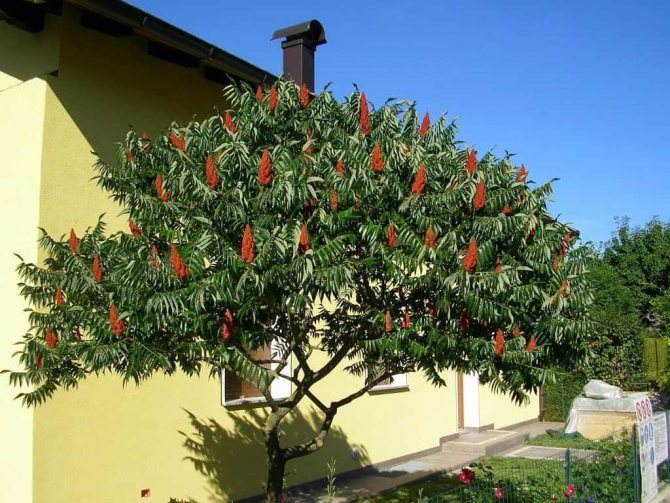

The place also matters. It is better if the space is open, well-lit. Partial shade, completely darkened areas should not be used.
The tree is not demanding for the air temperature in temperate latitudes. It will calmly survive severe frost and heat. A strong flurry of wind is destructive for him, because of which the open area should be bypassed during landing.
Growing
They have a well-developed root system, which gives a huge amount of growth. If at first the tree does not cause trouble for the owners, then after 3 - 4 years it begins to show invasiveness. Gardeners have to spend tremendous efforts to combat young growth. If you let the growth process take its course, very soon the site will turn into a dense thicket.
The more sumac freezes in winter, the more actively it throws out root suckers with the arrival of heat. Thus, the plant struggles to survive. Crown pruning also encourages overgrowth formation.
It should not be naive to think that in the absence of freezing of the branches in winter, the tree will not throw out the basal offspring. Artificial fences will not restrain its spread throughout the site. Powerful roots are able to overcome any obstacle. Indeed, in its natural habitat, Sumy prefers to settle on rocky soils and rocky cliffs.
It spreads its roots almost all over the site. Often, new trees can be found at a distance of 5 - 6 meters from the mother plant. Given this feature, do not plant it near houses or fences with a deep foundation, so as not to provoke the destruction of buildings.
Most often, sumac is in the form of a tree. There are also specimens in the form of bushes. If you want to grow a tree, and the plant produces many stems from the planting hole, ruthlessly remove all unnecessary. It is absolutely not difficult to form a bole and a spreading crown.
Possible problems


Most often, the vinegar tree is affected by fungal diseases - this is powdery mildew and drying out of the branches. Fungal spores affect not only the tree itself, but also the soil. The leaves are covered with a white bloom, which grows rapidly and captures the entire area, crawling onto the branches and trunk. The longer the process takes, the more likely the tree will die.
The best treatment is to remove all affected shoots. Gardening stores sell specialty chemicals that can help deal with the problem. As a preventive measure, you need to regularly weed, do not plant plants close to each other, and often inspect all branches.
The fungus enters the plant with bark damage. It begins to crack, the shoots dry. Dead branches have a black mycelium. The main treatment is to remove infected shoots and treat the bark. For this, special preparations are used.
Description of the virgin bird cherry, planting and caring for it

